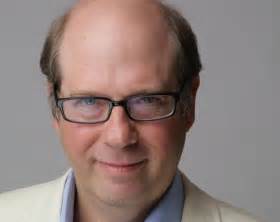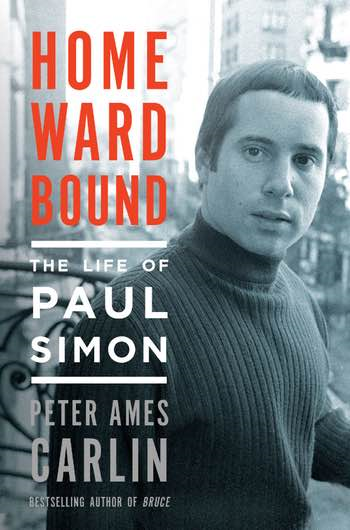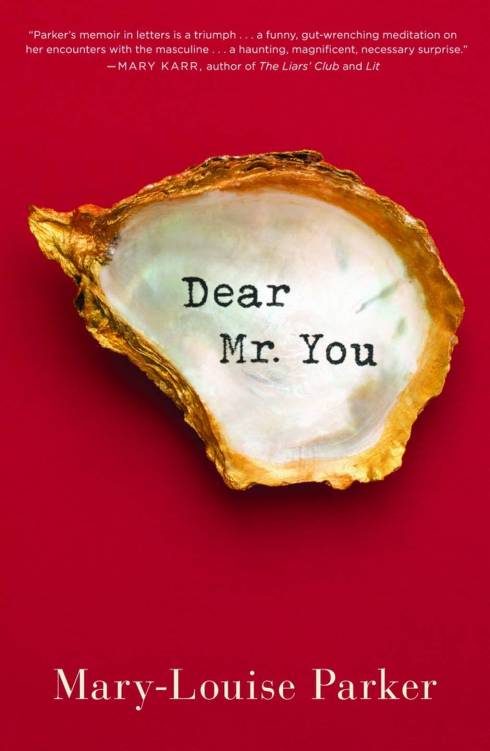You are currently browsing the category archive for the ‘Dallas’ category.
https://www.dallasnews.com/arts/books/2017/04/25/harry-hunsicker-interview
EXCERPT:
By Joyce Sáenz Harris
Dallas native Harry Hunsicker leads something of a double life. In his day job, he runs his family business as a commercial real estate appraiser. But in his spare time, he writes Texas-centric thrillers.
“My day job has meant that I have been to just about every corner of the city, places most people don’t know exist,” Hunsicker says. “That’s what really colors my writing, the starting point of almost every story, the sense of place that a vibrant town like Dallas has to offer.”
In his newest book, The Devil’s Country (Thomas & Mercer, $15.95), Hunsicker introduces a new protagonist: a former Texas Ranger from Dallas. Arlo Baines gets off the bus in a dusty West Texas town and finds himself in the middle of a mysterious, cult-related murder, with two kids’ lives in the balance.
Hunsicker’s story moves at a relentless pace, with all the twists and surprises his readers have come to expect. Fans will have the chance to meet Hunsicker at the Dallas Book Festival on Saturday, April 29. We asked him to do this Q&A in advance, via email.
Before this, you published your first three-book series, the Lee Henry Oswald Mysteries, and more recently a second three-book series, the Jon Cantrell Thrillers. So, with a new protagonist in The Devil’s Country, have your readers seen the last of Hank and Jon?
Never say never, but the natural rhythm of my characters seems to follow the trilogy format. I never understood authors who stopped writing series books, complaining about where to take their characters next, until I sat down to work on the second Oswald book, The Next Time You Die. On page one, I got it. There are only so many emotional arcs you can put a character through before his/her reactions seem stale and unrealistic.
The Devil’s Country introduces Arlo Baines, a former Texas Ranger who is a damaged soul with a tragic recent history. Why did you decide to make Arlo a Ranger rather than a PI?
I wanted to try something new. Also, I have always wanted to write a police procedural, but since I have no law enforcement background and too much research tends to bog down my writing, I figured an ex-cop was the next best thing. In terms of Arlo Baines’ character, I wanted him to be completely cut off from his old world — family, job, even where he lives — so he had to be an ex-something. After thinking about the setting, the badlands of West Texas, I decided it made sense for Arlo to be an ex-Texas Ranger, drummed out of the corps, so to speak.
There are some personal things about Arlo that we still don’t know by the end of this book. Will his loved ones’ names surface with more of his memories and secrets in a future Arlo novel?
Yes, without a doubt. Arlo is forever scarred by what happened to his family. The events that preceded his appearance in The Devil’s Country have altered him in many ways, his worldview, the way he interacts with others, etc. Put simply, Arlo has more baggage than a luggage store.
For the rest of the story, visit:
https://www.dallasnews.com/arts/books/2017/04/25/harry-hunsicker-interview
EXCERPT:
By Joyce Sáenz Harris
Even for fans who are well-acquainted with the work of Dallas native Stephen Tobolowsky, his new book, My Adventures with God, is a bit of a surprise: an exploration of his midlife return to the Jewish faith.


PHOTO: Jim Britt
Tobolowsky is a graduate of Justin F. Kimball High School and Southern Methodist University. In the past three decades, he has become a beloved character actor who displays both comedy and drama chops in more than 100 films as diverse as Groundhog Day and Mississippi Burning. He’s been on more than 200 TV shows ranging from Deadwood to Glee, most recently Silicon Valley and The Goldbergs. He also tells stories on the popular podcast The Tobolowsky Files.
Tobolowsky, who lives in Los Angeles, will return to his hometown to celebrate the publication of My Adventures With God (Simon & Schuster, $25) on Tuesday, April 18, with an appearance at the Dallas Museum of Art as part of Arts & Letters Live. He answered questions by email; here are highlights.
Like your 2012 book The Dangerous Animals Club, My Adventures with God is a memoir with a lot of Dallas and many laugh-out-loud moments. But the spiritual aspect often takes it into a more serious realm.
Simon and Schuster asked me if I could write a book on faith. When I was grasping for a premise for My Adventures with God, I came up with something that turned out to be truer than I first imagined: Our lives often fit the template of the Pentateuch, the first five books of the Old Testament.
We all have a Genesis. This is usually what we talk about on a first date: who we are, where we came from, our aspirations. Then, like in Exodus, we go into slavery. Instead of building pyramids, we lose ourselves in the desperation of first loves, first jobs. Some are trapped by drugs and alcohol, others by graduate school.
Then we escape and have our Leviticus moment. We stop and say, “This is what I am.” This is when I married Ann. When I became a father. When I returned to Judaism. Then we are shaped by mortality, as in the Book of Numbers, as we lose family and friends. And finally, we get to a place of perspective: Deuteronomy. It is here when we tell our stories to our children and try to make sense of the journey.
You were in seventh grade when President John F. Kennedy was assassinated in Dallas, and you write that “for those few days, history pulled back the curtain and showed us all how close we are to the edge of nothing.” Have you had any other occasions like that, such as 9/11?
Once you are aware of how delicate civilization is, you see its potential downfall everywhere. Usually in lies. They can be big lies from people in power — or the lies we tell ourselves. It doesn’t take anything as cataclysmic as 9/11. As my mother said, “Don’t break your word. You only get one. When you break it, it’s hard to get it back again.”
For the rest of the story, visit:
https://www.dallasnews.com/arts/books/2017/04/12/dallas-stephen-tobolowsky-faith-new-book-everyones-old-testament-lives

Somewhere in a burst of glory
Sound becomes a song
I’m bound to tell a story
That’s where I belong.
— Paul Simon, “That’s Where I Belong” (1999)
By Joyce Sáenz Harris, Special Contributor
For baby boomers, singer-songwriter Paul Simon has always been a part of our world, his music inseparable from our memories. In Homeward Bound, biographer Peter Ames Carlin (who also published a best-selling 2012 bio of Bruce Springsteen) brings the shrewd eye of a reporter, as well as the enthusiasm of a lifelong fan, to his scrutiny of Simon.
This was not an easy task, and Homeward Bound gets off to a slow start. But the story gathers momentum as Carlin, working from the enforced distance of the unauthorized biographer, draws a meticulously reported, often startlingly perceptive portrait.
Here is Simon as an outer-borough striver who became a superstar by virtue of pure talent and unremitting hard work. Here is a man, first famous at age 24, who built and maintained a half-century career in the fickle field of pop by constantly reinventing himself and his music.
He seldom has seemed entirely content with the astonishing success and acclaim earned with his genius for songwriting. The unanswered question running throughout Carlin’s narrative is: Why? Where does Simon’s dissatisfaction come from, and are his dark edges inseparable from his creativity?
Part of the answer may lie in young Paul’s relationship with his father, Louis, a musician and teacher who never seemed to fully appreciate his son’s talent or his success. The younger Simon was academically gifted, a natural athlete and a leader in school, but his father considered his son’s musical achievements unimportant. Lou would have preferred Paul to be a teacher, or perhaps a lawyer; being a singer-songwriter wasn’t serious work, and according to Carlin, Paul carried his father’s judgment around all his life.
Simon’s other major source of dissatisfaction lay in his lifelong friendship with singing partner Art Garfunkel. Paul was the one with the stellar songwriting talent as well as the business smarts. But Carlin says Paul often felt overlooked because he was short, dark and average-looking where angel-voiced Art was tall, blond and more conventionally handsome. For years, the two of them spent more time together than they spent with their own brothers, but the relationship grew strained as their interests diverged.
Simon and Garfunkel split up in 1970 after five years and five albums, ending with the smash LP Bridge Over Troubled Water. While they periodically reconciled and even did a couple of reunion tours over the next 30 years, their friendship has been basically off-again for the past decade and a half. Carlin accurately describes Paul’s relationship with Art as being “by turns his oldest and best friend and a guy he can barely stand to be near.”
Paul’s solo career has lasted 45 years now, and despite its ups and downs, he has never failed to produce critically acclaimed music that has garnered three generations of fervid fans. His 1986 album Graceland, inspired by South African township music, was a landmark on the level of Bridge Over Troubled Water. His third marriage, to Dallas singer-songwriter Edie Brickell, has lasted almost 25 years and produced three now-grown children. He is a philanthropist whose co-founding of The Children’s Health Fund has helped children in Dallas and across the nation.
Paul Simon would seem to have everything a man could want, including a dozen Grammy Awards, the Library of Congress’ first Gershwin Prize for excellence in popular song, the Kennedy Center Honors, and a place in the Rock and Roll Hall of Fame as well as the Songwriters Hall of Fame.
And yet… and yet. Is he content? Probably not. On Paul’s 75th birthday, his lifelong rival Bob Dylan was awarded the Nobel Prize for Literature. Dylan doesn’t even seem to care about the Nobel, and it is clear from what Carlin writes that Paul would have cared enormously.
Six months ago, on his Stranger to Stranger tour, Paul appeared to have a great time with his adoring North Texas audiences, showing no sign of moodiness onstage. But, as Carlin says, “When he’s not making it look easy, he’s nearly buckling under the burden.” The songs come more slowly as time passes more quickly, and as the tour continued, he talked to interviewers about retiring.
In this tough but compassionate examination of his life, his fans will come to understand Paul Simon a little better. Here’s hoping he knows that by working through his darkest moments, something of lasting joy was created – and the roots of rhythm will remain.
Joyce Sáenz Harris is a Dallas freelance writer who has been listening to Paul Simon’s music for 50 years.
Homeward Bound
The Life of Paul Simon
Peter Ames Carlin
(Henry Holt, $32)
http://www.dallasnews.com/lifestyles/books/20160102-memoir-dear-mr.-you-by-mary-louise-parker.ece

I have seen Mary-Louise Parker act in three very different Broadway plays: Craig Lucas’ Prelude to a Kiss (1990), Alan Ayckbourn’s Communicating Doors (1998) and David Auburn’s Proof (2000), for which Parker won a Tony Award as Best Actress in a Play.
Witnessing those performances probably influenced my perception of Parker as a fiercely private person, a reluctant celebrity who is as elusive as a shapeshifter. She admits that she is strongly opinionated, and some who have worked with her might not call her particularly collegial. But her acting talent is undeniable — and so, it would appear, is her talent as a writer.

Dear Mr. You is billed as a memoir, but it is different from virtually any other memoir I have read. Most are fairly straight-ahead narratives, moving from Point A to Point B and onward in chronological order, including or excluding juicy details as the teller prefers. Generally speaking, you will get names, dates, places and specific happenings in various degrees of candor.
Parker, 51, does not do any of this. Instead, Dear Mr. You is written as a series of letters or thank-you notes addressed to the various men who have influenced her life. She starts with Grandpa and Daddy and includes lovers, friends, acquaintances and strangers, but not her brothers.
Almost no names are given. Dates and places aren’t often specified. There’s a fair amount of mystery here, at least if you thought you were really going to get the skinny on Parker’s past. But this memoirist isn’t giving up the goods that easily.
“People are consistently curious about other people’s business,” Parker recently toldThe Washington Post. “They always have been. They probably always will be. … No one’s entitled to anyone’s information about anyone else.”
Nevertheless, Parker reveals a fair amount of herself, or at least of the self she wants us to see, and it feels real enough that one can believe she sincerely means it. Each chapter in Dear Mr. You is a prose poem of sorts, filled with emotional memories — though Parker says in her prologue that she loathes the word memories “for both its icky tone and wistful graveyard implications.”
She fondly recalls men who “can fix my screen door, my attitude, and open most jars … slam a puck, build a decent cabinet or the perfect sandwich.” This book, it seems, is her chance to say “thank you for the tour of the elevator cage, the sound booth, the alley; thank you for the kaleidoscope, the get-well tequila, the painting, the truth.”
Among them was “Man Out of Time,” an elegant guy she met at a party, with whom she struck up a necessarily short but lovely friendship because “I just liked you so much.” It’s an elegiac story that rings true for all of us who have lost special friends much too soon.
Then there was “Mr. Cabdriver,” whose egregiously wrong turns on a bad day threw a hugely pregnant Parker into an f-bomb-fueled panic (in her defense, she had just been dumped by her longtime beau, actor Billy Crudup) and prompted the cabdriver to make an abrupt stop for her unscheduled departure. When the cabbie shouted, “Go! I am not taking you to anywhere, you are very awful! I don’t want you anymore,” Parker replied, “No one does.” Then she wailed: “I am alone. Look, see? I am pregnant and alone.”
Her misery at that moment is palpable. But so is her later joy, in “Dear Orderly,” when she writes about her son, the one perfect thing that came out of that bad time: “Look at him there, would you? I mean, have you ever? I almost can’t believe it. He’s my only and my one. He’s my ever and after. … He is my job now, the best one I’ve ever had, by a zillion, and I will be doing this one until I drop.”
In a way, Parker’s writing reminds me a bit of Anne Lamott’s, even to its offbeat, unconventionally spiritual aspects. Her most affecting chapter is her last one, “Dear Oyster Picker,” which is about her beloved father’s death. Upon finishing it, not only did I understand the meaning of the oyster shell pictured on the book’s dust cover, but I also understood exactly why Parker felt compelled to become a writer.
Joyce Sáenz Harris is a freelance writer in Dallas.
Plan your life
Mary-Louise Parker will appear with Mary Karr at 7:30 p.m. Jan. 11 at the Dallas Museum of Art as part of Arts & Letters Live. VIP tickets, which include priority seating and access to the signing line as well as a book, $75; general admission $35, with discounts for students and DMA members, at dma.org/tickets or 214-922-1818.



